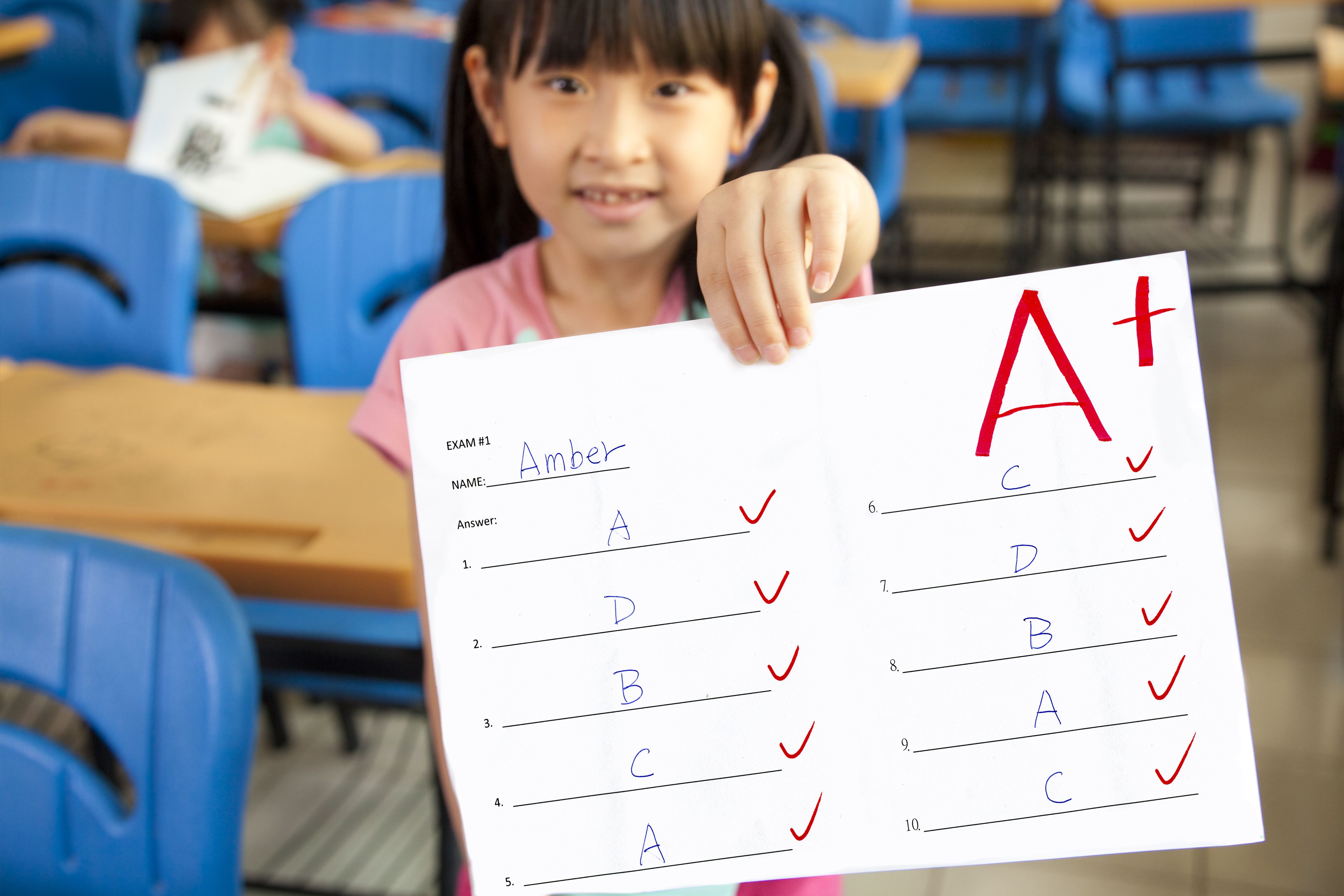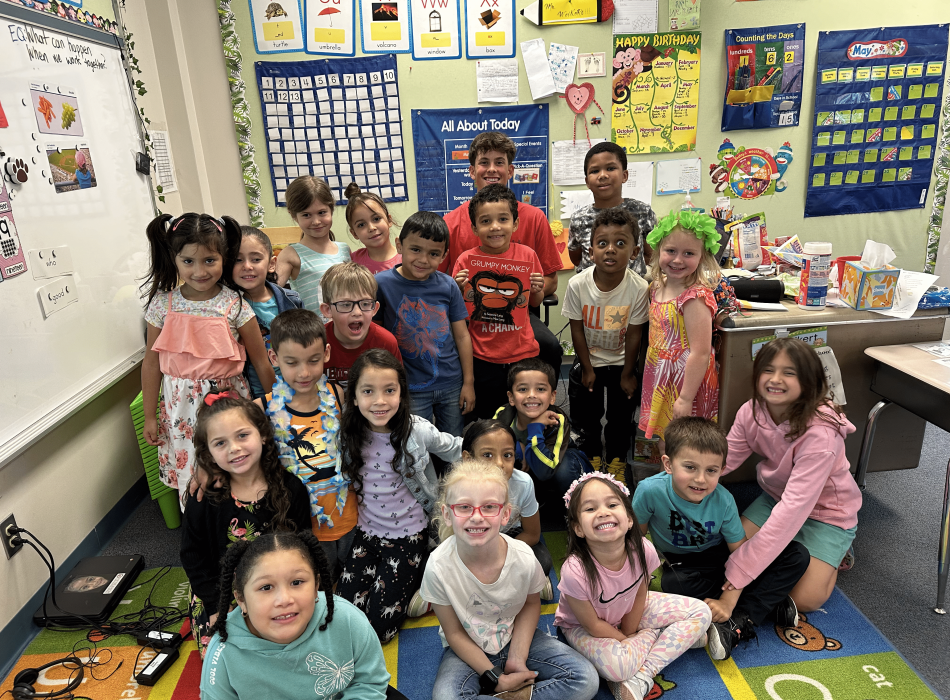The benefits of a well-rounded Grade School education
Wiki Article
Innovative Knowing Activities in Kindergarten: Enhancing Skills Through Play and Interaction
Creative learning activities in kindergarten offer as fundamental experiences for young learners (Private School). These activities motivate skill advancement with spirited involvement and social communication. Kids discover their creative thinking, improve communication, and learn beneficial social skills. Each experience adds to their growth in one-of-a-kind means. Recognizing how these tasks form early advancement discloses the profound effect of play in education and learning. What certain elements make these experiences so efficient in supporting all-around people?The Duty of Play in Early Childhood Development
While lots of might undervalue the significance of play, it offers as a fundamental part of early youth advancement. With play, kids discover their settings, foster social skills, and establish cognitive capacities. Participating in unstructured tasks permits them to use their creative imagination, experiment with analytical, and improve their critical thinking skills. Furthermore, play supplies a secure room for psychological expression, making it possible for children to browse their sensations and build strength.Furthermore, play encourages physical growth as children take part in tasks that enhance their motor abilities and coordination. Interaction with peers throughout play promotes synergy and communication, laying the foundation for future relationships. Grade School. Educators and moms and dads acknowledge that play is not just an activity but an essential facet of knowing, forming a youngster's ability to adjust and flourish in different circumstances. Eventually, play enriches youngsters's lives, preparing them for the difficulties of the future while cultivating a lifelong love for learning
Innovative Arts and Crafts: Triggering Creativity
Innovative arts and crafts play a substantial duty in firing up kids's creativities and boosting their imaginative skills. These activities encourage self-expression through different mediums, such as painting, drawing, and sculpting. By taking part in hands-on tasks, children discover to control materials, cultivating great motor abilities and hand-eye control.Imaginative arts offer a platform for vital and analytic thinking, as youngsters explore different techniques and methods to their developments. This exploration allows them to experiment, choose, and pick up from their experiences.
Collaboration is one more key element, as children usually work together on team projects, sharing concepts and sources. This communication not just constructs social abilities yet additionally nurtures a sense of community. Ultimately, innovative arts and crafts work as necessary devices in a preschool setup, advertising cognitive, psychological, and social advancement while stimulating the innate curiosity and imagination of young students.
Interactive Narration: Structure Language Skills
Interactive storytelling acts as an effective device for developing language abilities in young kids, as it involves them in the narrative procedure and motivates energetic engagement. Through narration sessions, children are invited to pay attention, respond, and also add to the unfolding tale. This interactive format supports vocabulary growth by subjecting them to new words in context.As they participate, youngsters practice crucial interaction abilities, such as articulation and expression. They discover to series events, determine personalities, and comprehend the plot, cultivating crucial reasoning. Additionally, interactive narration commonly integrates visual help, sound impacts, and props, which even more boost engagement and understanding.
Moreover, when kids share their very own tales, they experience a feeling of agency and imagination, enhancing their language skills in a helpful environment. Ultimately, interactive narration grows a love for language and literary works, establishing a solid structure for their future scholastic success.
Hands-On Science Experiments: Motivating Inquiry
Hands-on science experiments give young learners with invaluable chances to explore and ask regarding the globe around them. Participating in easy, interactive experiments permits kindergarteners to ask questions, make predictions, and observe results firsthand. These tasks boost interest and cultivate a sense of marvel, motivating youngsters to investigate the buildings of materials, reactions, and natural sensations.For example, experiments such as growing seeds or mixing baking soda and vinegar not only show clinical concepts but also boost critical assuming skills. Children find out to record their observations, advertising literacy and numeracy as they measure, contrast, and document data. Furthermore, hands-on science fosters a development mindset, teaching resilience as they browse obstacles and gain from mistakes.

Collaborative Games: Promoting Team Effort and Social Abilities
Participating in joint video games supplies kindergarteners an unique system to create synergy and social abilities while developing on the inquiry-based knowing promoted by hands-on scientific research experiments (Kindergarten). These games urge kids to function together towards typical objectives, promoting interaction and cooperation. As they browse various obstacles, they discover to share responsibilities, work out duties, and fix problems-- vital components of reliable teamworkWith organized tasks such as team problems, relay races, or participating narration, youngsters not only improve their social communications yet also strengthen their emotional intelligence. They get understandings right into compassion and support, discovering that each youngster's payment is beneficial. In addition, these collaborative experiences promote a feeling of neighborhood within the class, producing bonds that extend past specific play. By integrating collective video games right into the curriculum, educators can lay the groundwork for necessary life abilities that will benefit children in their future instructional and social environments.
Frequently Asked Questions
How Can Parents Support Creative Learning at Home?
Parents can support imaginative understanding in your home by offering diverse materials, encouraging exploration, taking part in creative play, asking flexible concerns, and fostering a secure setting where youngsters do not hesitate to express their ideas and imagination.
What Materials Are Finest for Arts and Crafts Activities?
A variety of products improve crafts and arts tasks, including building paper, scissors, adhesive, markers, paints, and recycled things. These resources inspire creative thinking and enable kids to discover their creative imagination with hands-on experiences.Exactly How Do Teachers Examine Children's Creative thinking?
Teachers analyze children's creative thinking through monitorings, profiles of work, and flexible jobs that encourage self-expression. They examine problem-solving abilities, creativity, and willingness to experiment, supplying understandings into each kid's unique innovative growth and abilities.What Are Some Instances of Outdoor Creative Activities?

Just How Can Social Motifs Be Integrated Into Creative Understanding?
Social themes can be incorporated into imaginative learning by including varied tales, songs, art, and traditions, motivating youngsters to discover and commemorate different backgrounds, fostering inclusivity and understanding while enhancing their creativity and cognitive skills.Children explore their creative thinking, boost interaction, and discover important social skills. Through play, children discover their environments, foster social abilities, and create cognitive abilities. In addition, play urges physical growth as youngsters involve in tasks that improve their motor abilities and coordination. Imaginative arts and crafts play a substantial role in stiring up kids's creativities and boosting their imaginative abilities. Interactive storytelling offers as a powerful device for building language skills in young youngsters, as it engages them in the narrative procedure and motivates active engagement.
Report this wiki page